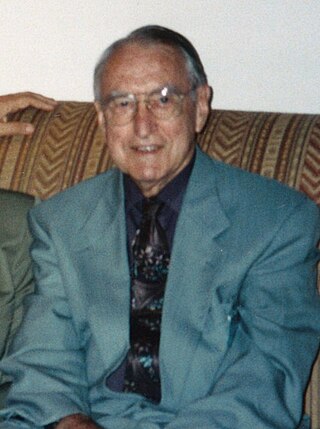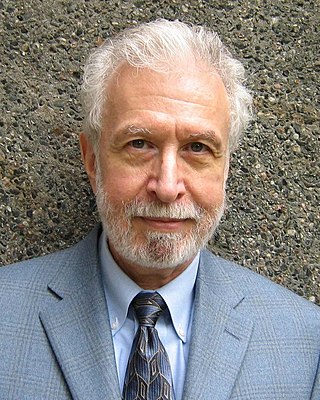
A paraphilia is an experience of recurring or intense sexual arousal to atypical objects, places, situations, fantasies, behaviors, or individuals. It has also been defined as a sexual interest in anything other than a legally consenting human partner. Paraphilias are contrasted with normophilic ("normal") sexual interests, though the definition of what makes a sexual interest normal or atypical remains controversial.

Sexual fetishism or erotic fetishism is a sexual fixation on a nonliving object or body part. The object of interest is called the fetish; the person who has a fetish for that object is a fetishist. A sexual fetish may be regarded as a non-pathological aid to sexual excitement, or as a mental disorder if it causes significant psychosocial distress for the person or has detrimental effects on important areas of their life. Sexual arousal from a particular body part can be further classified as partialism.

John William Money was a New Zealand American psychologist, sexologist and professor at Johns Hopkins University known for his research on human sexual behavior and gender. Believing that gender identity was malleable within the first two years of life, Money advocated for the surgical "normalization" of the genitalia of intersex infants.
Hebephilia is the strong, persistent sexual interest by adults in pubescent children who are in early adolescence, typically ages 11–14 and showing Tanner stages 2 to 3 of physical development. It differs from pedophilia, and from ephebophilia. While individuals with a sexual preference for adults may have some sexual interest in pubescent-aged individuals, researchers and clinical diagnoses have proposed that hebephilia is characterized by a sexual preference for pubescent rather than adult partners.

Kurt Freund was a Czech-Canadian physician and sexologist best known for developing the penile plethysmograph, research studies in pedophilia, and for the "courtship disorder" hypothesis as a taxonomy of certain paraphilias. After unsuccessful attempts to change men's sexual orientation, he advocated against conversion therapy and in favor of the decriminalization of homosexuality.
Penile plethysmography (PPG) or phallometry is a measurement of blood flow to the penis, typically used as a proxy for measurement of sexual arousal. The most commonly reported methods of conducting penile plethysmography involves the measurement of the circumference of the penis with a mercury-in-rubber or electromechanical strain gauge, or the volume of the penis with an airtight cylinder and inflatable cuff at the base of the penis. Corpora cavernosa nerve penile plethysmographs measure changes in response to inter-operative electric stimulation during surgery. The volumetric procedure was invented by Kurt Freund and is considered to be particularly sensitive at low arousal levels. The easier to use circumferential measures are more widely used, however, and more common in studies using erotic film stimuli. A corresponding device in women is the vaginal photoplethysmograph.
The term chronophilia was used by psychologist John Money to describe varying forms of romantic preference and/or sexual fixation limited to individuals of particular age ranges. Some such fixations, specifically those towards prepubescents and those towards the elderly, constitute types of paraphilia. The term has not been widely adopted by sexologists, who instead use terms that refer to the specific age range in question. An arguable historical precursor was Richard von Krafft-Ebing's concept of "age fetishism". Importantly, chronophilia are technically not determined by age itself, but by human sexual maturity stages, such as body type, secondary sexual characteristics and other visible features, particularly as measured by the stages of the Tanner scale.
Gerontophilia is the primary sexual attraction to the elderly. A person with such a sexual preference is a gerontophile or gerontosexual.
The lovemap is a concept originated by sexologist John Money in his discussions of how people develop their sexual preferences. Money defined it as "a developmental representation or template in the mind and in the brain depicting the idealized lover and the idealized program of sexual and erotic activity projected in imagery or actually engaged in with that lover."
Paraphilic infantilism, also known as autonepiophilia and adult baby, is a sexual fetish or non-sexual fetish that may involve role-playing a regression to an infant-like state. Paraphilic infantilism is a form of ageplay. People who practice paraphilic infantilism are often colloquially referred to as "adult babies", or "ABs".

Androphilia and gynephilia are terms used in behavioral science to describe sexual orientation, as an alternative to a gender binary homosexual and heterosexual conceptualization. Androphilia describes sexual attraction to men and/or masculinity; gynephilia describes the sexual attraction to women and/or femininity. Ambiphilia describes the combination of both androphilia and gynephilia in a given individual, or bisexuality.

Ray Milton Blanchard is an American-Canadian sexologist who researches pedophilia, sexual orientation and gender identity. He has found that men with more older brothers are more likely to be gay than men with fewer older brothers, a phenomenon he attributes to the reaction of the mother's immune system to male fetuses. Blanchard has also published research studies on phallometry and several paraphilias, including autoerotic asphyxia. Blanchard also proposed a typology of transsexualism.
The American-Canadian sexologist Ray Blanchard proposed a psychological typology of gender dysphoria, transsexualism, and fetishistic transvestism in a series of academic papers through the 1980s and 1990s. Building on the work of earlier researchers, including his colleague Kurt Freund, Blanchard categorized trans women into two groups: homosexual transsexuals who are attracted exclusively to men and are feminine in both behavior and appearance; and autogynephilic transsexuals who experience sexual arousal at the idea of having a female body. Blanchard and his supporters argue that the typology explains differences between the two groups in childhood gender nonconformity, sexual orientation, history of sexual fetishism, and age of transition.
Pedophilia is a psychiatric disorder in which an adult or older adolescent experiences a primary or exclusive sexual attraction to prepubescent children. Although girls typically begin the process of puberty at age 10 or 11, and boys at age 11 or 12, psychiatric diagnostic criteria for pedophilia extend the cut-off point for prepubescence to age 13. People with the disorder are often referred to as pedophiles.
Courtship disorder is a theoretical construct in sexology developed by Kurt Freund in which a certain set of paraphilias are seen as specific instances of anomalous courtship instincts in humans. The specific paraphilias are biastophilia, exhibitionism, frotteurism, telephone scatologia, and voyeurism. According to the courtship disorder hypothesis, there is a species-typical courtship process in humans consisting of four phases, and anomalies in different phases result in one of these paraphilic sexual interests. According to the theory, instead of being independent paraphilias, these sexual interests are individual symptoms of a single underlying disorder.

James M. Cantor is an American-Canadian clinical psychologist and sexologist specializing in hypersexuality and paraphilias.
Frits Bernard was a clinical psychologist, sexologist and gay and pedophile activist in the Netherlands. He was also a leading member and author for the Dutch Society for Sexual Reform and established a foundation in his own name. Bernard founded Enclave Kring, which led the Enclave International Fellowship in the 1950s. This made him the founder of the first pedophile movement.

Are All Men Pedophiles? is a 2012 documentary film by Rwandan-Dutch media producer Jan-Willem Breure. Presented by 14-year-old model Savannah van Zweeden and covering the topics of pedophilia and hebephilia, the entire film was financed privately, mainly by the 23-year-old Breure. Are All Men Pedophiles? had its world premiere at the Queens World Film Festival in New York City on March 2, 2012 and has been screened at a number of film festivals.
Erotic target location error (ETLE) is a hypothesized dimension for paraphilias, defined by having a sexual preference or strong sexual interest in features that are somewhere other than on one's sexual partners. When one's sexual arousal is based on imagining oneself in another physical form the erotic target is said to be one's self, or erotic target identity inversion (ETII).







